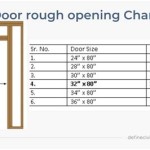Interior Design: Charting Your Academic Path Interior design is a multifaceted profession that blends creativity with technical knowledge. Individuals aspiring to this career path frequently inquire about the necessary educational qualifications. A targeted academic approach is fundamental for success in this field. Understanding the available educational options and their respective benefits is crucial for prospective interior designers.
The common question of which college is needed to become an interior designer is best answered by focusing on the type, quality, and accreditation of the interior design program itself. The specific institution is less critical than the curriculum and resources it provides. A successful career in interior design typically requires formal education beyond high school, although experience can supplement or, in some cases, even replace formal education over time. However, a structured educational program provides a comprehensive foundation in design principles, technical skills, and professional practices, making it the most direct and recommended route into the profession.
There are various academic pathways that an aspiring interior designer can pursue. These paths vary in length, intensity, and focus. The choice depends on individual career goals, financial considerations, and the desired level of specialization.
Associate's Degree in Interior Design
An Associate's Degree in Interior Design is a two-year program that provides a foundational understanding of the core principles of interior design. This degree is offered at many community colleges and vocational schools. The curriculum typically covers basic design concepts, space planning, drafting, color theory, and materials selection. Students also learn about building codes and safety regulations.
Graduates with an Associate's Degree are often prepared for entry-level positions such as design assistants, showroom consultants, or junior drafters. While an Associate's Degree offers a relatively quick entry into the field, it may limit career advancement opportunities compared to a Bachelor's Degree.
The advantages of an Associate's Degree include its shorter duration and lower cost compared to a four-year degree. This can be an attractive option for individuals who are eager to enter the workforce quickly or who have financial constraints. Furthermore, an Associate's Degree can serve as a stepping stone towards a Bachelor's Degree, allowing students to transfer credits and complete their education at a later time.
However, graduates with only an Associate's degree may find themselves at a disadvantage compared to those with a Bachelor's degree in terms of salary and job responsibilities. They might have fewer opportunities for management and leadership roles early in their careers without further education or extensive experience.
Bachelor's Degree in Interior Design
A Bachelor's Degree in Interior Design is a four-year program that provides a more comprehensive and in-depth education in interior design principles and practices. This degree is offered at many universities and colleges with established design programs. The curriculum expands upon the foundational knowledge gained in an Associate's Degree program, covering topics such as advanced space planning, sustainable design, lighting design, furniture design, and computer-aided design (CAD) software. Students also learn about project management, business practices, and professional ethics.
Graduates with a Bachelor's Degree are well-prepared for a wide range of interior design positions, including residential designer, commercial designer, hospitality designer, healthcare designer, and kitchen and bath designer. They are also qualified to pursue professional certification and licensure, which can enhance their credibility and career prospects.
The benefits of a Bachelor's Degree include a more thorough education, greater career opportunities, and higher earning potential. Employers often prefer candidates with a Bachelor's Degree, as it demonstrates a commitment to the profession and a higher level of knowledge and skill. A Bachelor's Degree also provides a strong foundation for pursuing graduate studies in interior design or related fields.
The Council for Interior Design Accreditation (CIDA) is the premier accreditation body for interior design programs in North America. CIDA accreditation signifies that a program meets rigorous standards of quality and prepares students for professional practice. Graduates of CIDA-accredited programs are typically better prepared for the NCIDQ examination, a standardized test required for professional certification in many jurisdictions.
The curriculum in a Bachelor's level interior design program typically includes:
Design Theory and History: Exploring the evolution of design movements and their impact on contemporary practice.
Space Planning and Programming: Learning to optimize space usage and meet client needs.
Construction Documents: Creating detailed technical drawings for construction purposes.
Building Systems: Understanding HVAC, electrical, plumbing, and other essential infrastructure.
Sustainable Design Practices: Implementing environmentally responsible design solutions.
CAD and BIM Software: Proficiency in industry-standard software for drafting and visualization.
Material and Finishes: Knowledge of various materials, their properties, and applications.
Master's Degree in Interior Design
A Master's Degree in Interior Design is a graduate-level program for individuals who wish to further specialize in a particular area of interior design or pursue advanced research and scholarship. This degree is typically a two-year program that requires a Bachelor's Degree in Interior Design or a related field. The curriculum focuses on advanced design concepts, research methodologies, and critical thinking skills. Students may choose to specialize in areas such as healthcare design, sustainable design, or historic preservation.
Graduates with a Master's Degree are prepared for leadership positions in the interior design profession, such as design directors, project managers, and consultants. They may also pursue careers in academia, teaching, and research. A Master's Degree can also enhance career opportunities in specialized areas of design and can lead to increased salary expectations. This is often a requirement for teaching interior design at a college or university level.
The benefits of a Master's Degree include advanced knowledge and skills, greater career opportunities, and higher earning potential. A Master's Degree also provides a strong foundation for pursuing doctoral studies in interior design or related fields. Master's programs often require students to complete a thesis or independent research project, allowing them to contribute to the body of knowledge in the field.
Pursuing a Master’s degree can open up doors to very specialized roles within the field, as well as positions in academia and research. It demonstrates a high level of commitment to the discipline and can allow designers to become thought leaders in specific areas, such as sustainable design, accessible design, or historic preservation. Selecting a Master’s program that aligns with one's specific career goals is an important step in maximizing its benefits.
Beyond degree programs, continuing education courses and workshops can be valuable for staying current with industry trends and developing new skills. Many professional organizations offer continuing education opportunities for their members. These courses can cover a wide range of topics, from new design software to sustainable building practices.
Accredited programs provide a structured curriculum, qualified instructors, and access to resources that are essential for developing the necessary skills and knowledge. Employers often prioritize graduates from accredited programs, as they are confident that these individuals have received a high-quality education. Students should always verify that a program is accredited before enrolling. The two main accrediting bodies for interior design programs in North America are the Council for Interior Design Accreditation (CIDA) and the National Association of Schools of Art and Design (NASAD).
A strong portfolio is a crucial component of a successful application to interior design programs and for securing employment after graduation. A portfolio showcases a student's design skills, creativity, and technical abilities. It should include a variety of projects that demonstrate a range of design solutions. Students typically develop their portfolios throughout their academic studies, gradually adding new and improved projects. Seeking feedback from instructors and industry professionals can help students refine their portfolios.
Internships and practical experience are invaluable for aspiring interior designers. Internships provide an opportunity to apply classroom knowledge to real-world projects and gain hands-on experience in the field. Interns work under the supervision of experienced designers, assisting with various tasks such as space planning, drafting, and materials selection. Internships can also help students build their professional networks and make connections with potential employers. Many interior design programs require students to complete an internship as part of their curriculum.
Professional certification can enhance an interior designer's credibility and career prospects. The National Council for Interior Design Qualification (NCIDQ) offers a standardized examination that assesses an individual's knowledge and skills in interior design. Passing the NCIDQ examination and meeting other requirements, such as work experience, allows designers to become certified interior designers. Many jurisdictions require interior designers to be certified or licensed in order to practice. Professional organizations such as the American Society of Interior Designers (ASID) and the International Interior Design Association (IIDA) also offer certification programs.
Networking with other professionals in the field is essential for career advancement. Attending industry events, joining professional organizations, and connecting with designers online can help students and graduates build their professional networks. Networking provides opportunities to learn from experienced designers, find mentors, and discover job opportunities. Online platforms such as LinkedIn can be valuable tools for networking and connecting with professionals in the interior design industry.
The field of interior design is constantly evolving, so it is important for designers to stay current with the latest trends and technologies. Reading industry publications, attending conferences, and taking continuing education courses can help designers expand their knowledge and skills. Staying abreast of new materials, software, and design practices ensures that designers are able to provide innovative and effective solutions for their clients.
Ultimately, the specific college needed to become an interior designer is less important than the quality and accreditation of the interior design program itself. Aspiring designers should carefully research different programs and schools to find one that aligns with their career goals and learning style. A combination of formal education, practical experience, and professional certification can pave the way for a successful and rewarding career in interior design.

How To Become An Interior Designer Insights Archive Fairfield University News

Interior Design Anne Arundel Community College

Do You Need A Degree To Be An Interior Designer Design School By Alycia Wicker

How To Become An Interior Designer Without A Degree No Experience Jd Institute Of Fashion Technology

Top 8 Amazing Interior Design Courses You Must Know About

Do You Need A License To Become An Interior Designer

What Is An Interior Designing Degree Degreequery Com

10 Best Interior Design Schools In The Us Decorilla

How To Learn Interior Design

Interior Design Degree Programs
Related Posts








